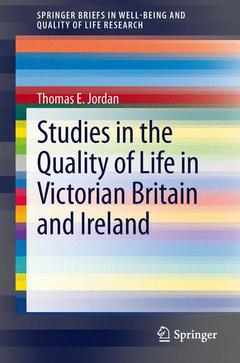Description
Studies in the Quality of Life in Victorian Britain and Ireland, 2013
SpringerBriefs in Well-Being and Quality of Life Research Series
Author: Jordan Thomas E.
Language: English
Subject for Studies in the Quality of Life in Victorian Britain and...:
65 p. · 15.5x23.5 cm · Paperback
Description
/li>Contents
/li>Comment
/li>
Introduction.- Chapter 1. Housing as Quality of Life, Dublin 1798 1821.- Chapter 2. The Anthropometric Committee of the British Association for the Advancement of Science, 1875-1883.- Chapter 3. Mars and Hygeia: The Application of Victorian Army Data on Height to the Quality of Life in the British Population .- Chapter 4. ''The Great Contrast'': Factor Analysis Applied to Quality of Life in the Era of the Irish Famine (co-authored with Pickett, L.).- Chapter 5. Victorian Economic Change and Heights: a Note on Lagged Effects.- Chapter 6. Sons of St. Patrick: Quality of Life and Heights of Young Irish Males at Mid-Nineteenth Century.

